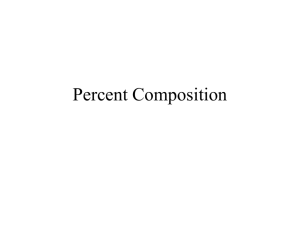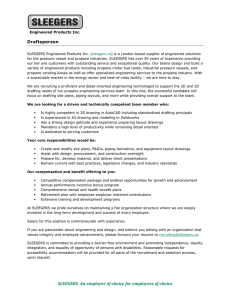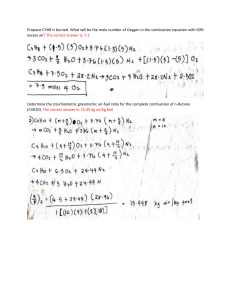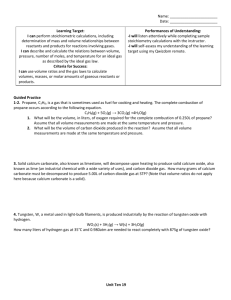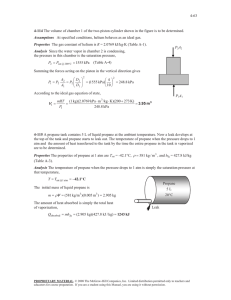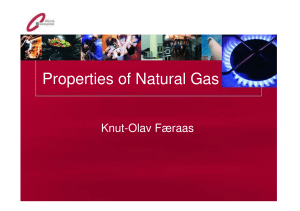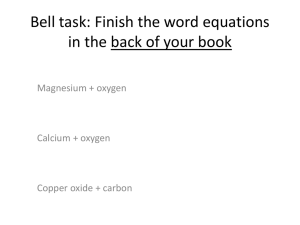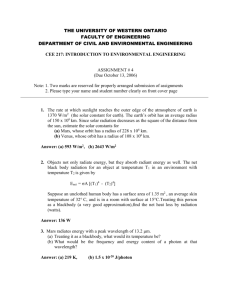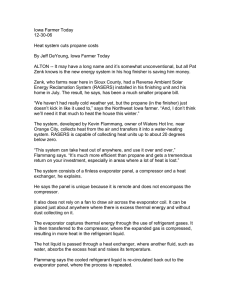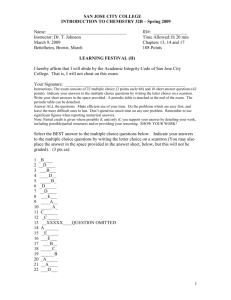chemical change
advertisement
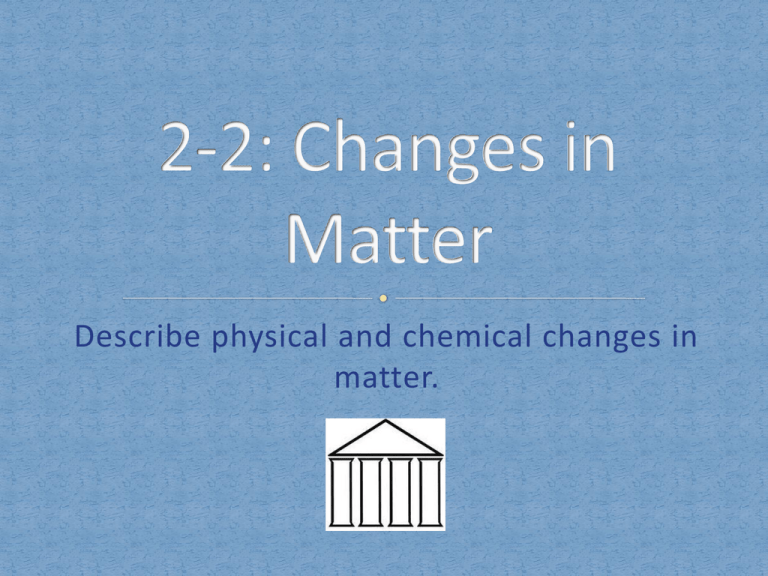
Describe physical and chemical changes in matter. When you crush chalk it only changes the physical appearance. When you spray vinegar on chalk, the formation of gas bubbles indicates a new substance has formed. Science Standard 8.5.b: Students know the idea of atoms explains the conservation of matter. In chemical reactions the number of atoms stays the same no matter how they are arranged, so their total mass stays the same. physical change: any change that alters the form or appearance of matter but does not make any substance in the matter into a different substance. chemical change: a change in matter that produces one or more new substances. law of conservation of matter: matter is not created or destroyed in any chemical or physical change. Physical Change Changes of State Changes in Shape or Form Chemical Change Example of Chemical Change Conservation of Matter The idea of atoms explains the law of conservation of matter. For every molecule of methane that burns, two molecules of oxygen are used. The atoms are rearranged in the reaction, but they do not disappear. Propane (C3H8) is a fuel that is often used in camping stoves. When propane burns, it reacts with oxygen, producing carbon dioxide gas and water vapor. The data table shows how much carbon dioxide is produced when different amounts of propane burn in oxygen. Interpreting Data: Based on the data in the table, how do you know that carbon dioxide is not the only substance formed in this chemical change? The mass of carbon dioxide is less than the sum of the masses of oxygen and propane. Calculating: Copy the data table and add a new column on the right. In the new column, enter how much water vapor is produced for each amount of propane burned. Students should enter the "missing" mass of the products. Graphing: Use the data in the table to make a graph. Plot the mass of C3H8 reacted on the horizontal axis, and the mass of CO2 produced on the vertical axis. The graph will produce a straight line. Reading Graphs: Use the graph to predict how much CO2 would be produced if 100 grams of propane burned in oxygen. 300 g List three kinds of physical changes that could happen to a plastic spoon. bend, break, melt… Why is boiling water considered a physical change? A new substance does not form. Answer #1-4 Finish the worksheet. HOMEWORK EXTENSION Write a detailed SUMMARY of the section and complete the UNANSWERED QUESTIONS section of your notes. Choose two of the remaining Depth & Complexity ICONS in your notes and explain how they relate to this section.

